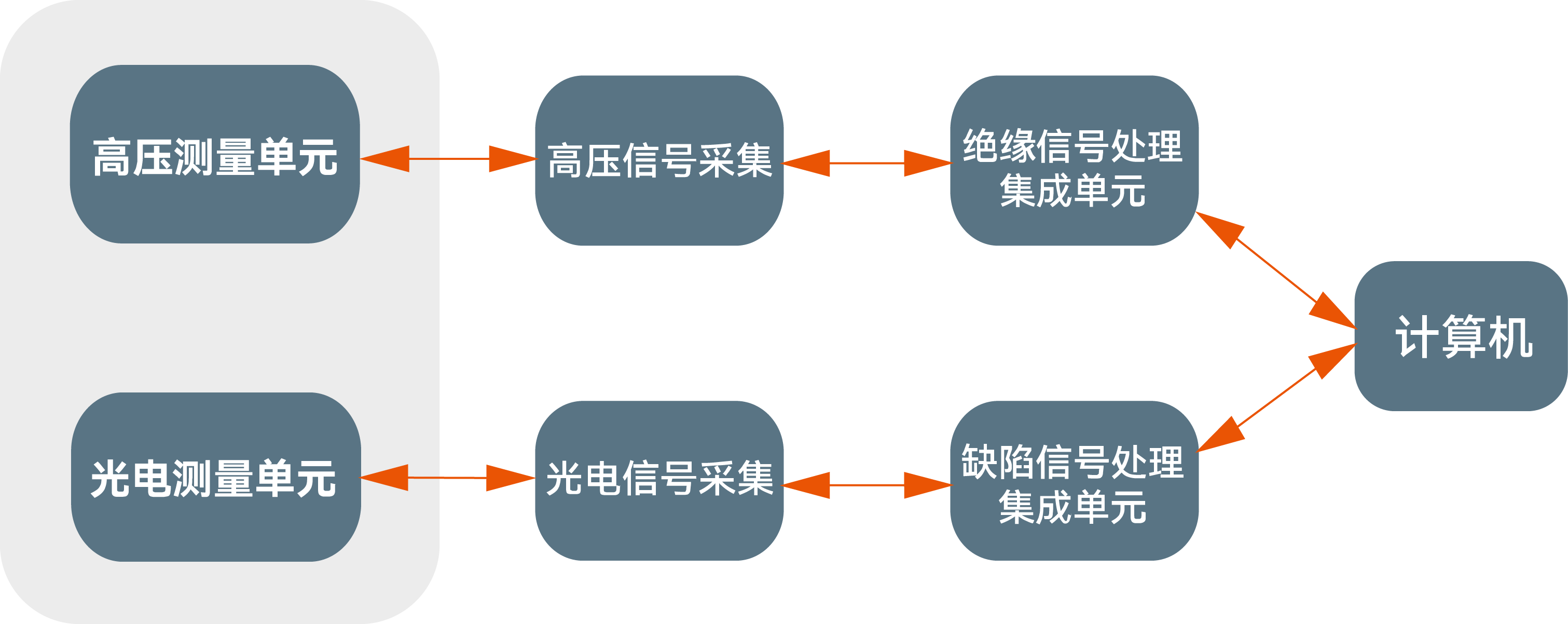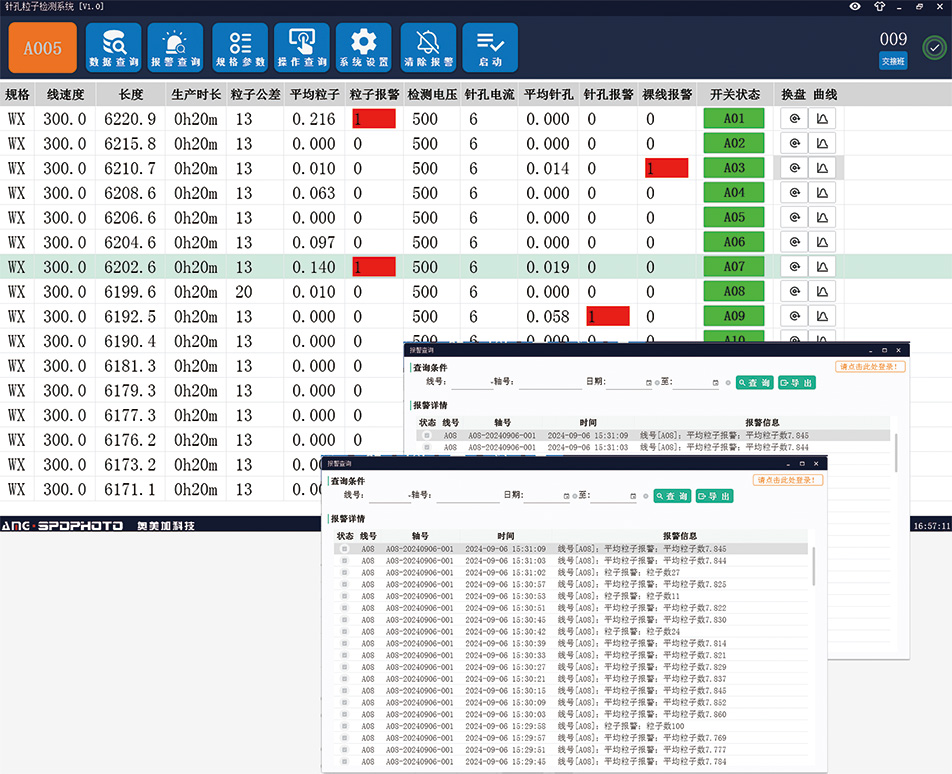Principles of High Voltage Pinhole Detection and Convex-Concave Particle Detection
| 
|
|
|
|
|
| This system can simultaneously conduct online non-contact detection of surface defects and high-voltage pinholes of the target object through two principles.
Pinhole detection is achieved by the computer controlling the high-voltage unit to generate corresponding direct current high voltage and apply it to the high-voltage wheel. When the enameled wire with defects passes through the high-voltage wheel, the insulation layer will be broken down, generating a leakage current signal.
The detection of convex and concave particles employs a highly collimated parallel light curtain. The light source is emitted by red LEDs and converted into parallel light through an optical lens to pass through the test area. When there is an object under test in the test area, it will block part of the parallel light, and the light is then converted into a voltage level on the photoelectric receiving element through a focusing lens. By detecting the current difference of the photosensitive element, it can be determined whether there are convex and concave points on the object under test.
|
|
This system can measure up to 32 production lines.
Paired with multifunctional data processing software
The high-voltage pinhole and particle defect detection system is equipped with professional data software, which has a variety of practical functions to meet the processing requirements of various data in production.

| Parameter Setting Options
Set the specification parameters of the object under test, such as detection voltage.
|
Detection Value Display
Display the quantity and location of pinhole defects and convex-concave defects. |
Information Statistics
It can statistically display the overall detection results. |
Operation Query
Operation Query |
Abnormal Alarm Prompt |
Historical Data Query and Export
Query production data by date, and generate detection data charts to make the data more intuitive and readable. |
|
|
|
 Combines enameled wire surface defect and high-voltage pinhole detection. Ideal for simultaneous multi-line production.
Combines enameled wire surface defect and high-voltage pinhole detection. Ideal for simultaneous multi-line production.





